Reviews
Joseph Zito
USA, 1985
Credits
Review by Leo Goldsmith
Posted on 04 July 2009
Source MGM DVD
External links
Final bazooka duel from Invasion U.S.A.
Categories Favorites: The Action Movie
If the Fourth of July and the action movie tell us anything, it’s that America likes explosions. The rockets’ red glare of Independence Day, as ardently driven home in Roland Emmerich’s blockbuster of the same name, symbolically offers the pleasures of violently claiming one’s freedom, that most treasured and misappropriated of American qualities. And while there are countless filmmakers who have located the force of this symbolism in the blood and thunder of the Hollywood action movie, few have done so with so much nationalist zeal, so little shame, and so many bullets as a production team consisting of two cousins from Israel: Yoram Globus and Menahem Golan.
After purchasing Cannon Films in 1979, Golan and Globus quickly began churning out low-budget films of varying quality at an astonishing rate. A great many of these were action films - defibrillated franchises like Charlie Bronson’s Death Wish series, Texas Chainsaw Massacre, and even Superman - or vehicles for stars like Franco Nero (in 1981’s infelicitously titled Enter the Ninja), Michael Dudikoff (American Ninjas 1, 2, 3, 4, and V), Jean-Claude Van Damme (Bloodsport, Kickboxer), and even a somewhat desperate Sylvester Stallone (Cobra and Over the Top). But alongside these and other bargain-priced popular entertainments (like the Breakin’ films, and the Dolph Lundgren-Frank Langella Masters of the Universe), Golan and Globus also produced an impressive array of prestige films, like Cassavetes’ Love Streams, Little Dorrit, Konchalovsky’s Runaway Train, Neil Jordan’s werewolf film The Company of Wolves, Zefferelli’s film of Verdi’s Otello, and A Cry in the Dark (the Meryl Streep-“that dingo ate my baby!” movie). Meeting Jean-Luc Godard at Cannes in 1985, Menahem Golan signed an agreement - on a restaurant napkin, according to the legend - to put $1 million into the director’s King Lear, with Norman Mailer starring. Not unpredictably, the producer wasn’t thrilled with the results, and the final film features a phone call from an irritated Golan to Godard on the soundtrack in the opening sequence.
Invasion U.S.A. cleaves more closely to Cannon’s preferred target audience, the red-meat and denim crowd, offering bloody gun violence, blistering orange explosions in slo-mo, and the minimum amount of plot and character-development necessary to stave off total abstraction. It also features the brightest star in Cannon’s very own beefy constellation: Chuck Norris. After flexing his box-office muscle in Lone Wolf McQuade and the Vietnam POW rampage Missing in Action (to say nothing of its sequels), Norris was primed for a more expansive film, one that would combine heavy-duty ass-kicking with a global political vision—albeit filmed on a budget only slightly greater than Cannon’s usual. What results is, as the title makes abundantly clear, a nakedly nationalistic film, exploiting every possible stereotype and headline-grabbing problem of the day to craft its vision of a mid-1980s America in peril. There’s the Cold War, the Drug Wars, and the Race Wars, and each of these is neatly shoehorned into the film to conform to a simplistic, arch-conservative point of view on Reagan-era America. The poverty in black and latino communities leads to moral weakness and violence; the complacency of the otherwise benevolent white middle-class is so distracted by its freedom to shop that they overlook the Leftist menace in their midst; and only One Man - a libertarian redneck who simply wants to be left the fuck alone - has the red, white, and blue balls big enough to put an end to these problems.
This, you commie bastard, is Chuck Norris in the role of ex-CIA bad-ass Matt Hunter, clearly a man not to be fucked with. Following a falling out with his bureaucrat bosses who presumably would not let him do things his way, Hunter now spends his time tooling around the Everglades in an airboat, wrassling alligators, chainsawing logs, and dining on frogmeat with his bayou buddy and a pet armadillo at his side. But though these extremely cool and masculine activities soak up a lot of screentime, this blissful hollerfolk existence is cruelly cut short. When villainous Ruskie terrorist Rostov and his cronies blow up Hunter’s shack and kill his friend, it’s time for redneck justice. The thought-process behind this decision to seek vengeance upon Hunter is obviously a bit murky, but it has something to do with Rostov not being able to get the good night’s sleep necessary to orchestrate his full-scale invasion of the United States.
Whatever the precise reasons for this attempted killing of Hunter, it proves disastrously miscalculated, for it not unpredictably initiates the Hunter’s hunt for his prey amid the extremely bloody, mass-hysterical terrorist violence that Rostov and his men perpetrate on the American people. For, as in all good action films, though the background is the grand standoff between the USA and the USSR, what our story amounts to is a very local, mano a mano grudge-match between Hunter and Rostov. Sure, there is at most one female character - a photojournalist inserted into the film to expose plot details and dangle the possibility (never realized) of giving Chuck Norris someone to sleep with - but for the most part the film is populated by characters of every race and political background who are mere pawns in the game of global politics and capitalist-versus-communist warfare. In one corner, we have Norris, the one man with the probity, muscle, and firepower to synecdochically represent what is still good and solid and sweaty about America; and in the other, there’s Rostov, the fey, utterly remorseless, and (most importantly) evil-looking Russian ringleader.
Played by the absurdly prolific character-actor Richard Lynch, whose scarred face (apparently the result of an incident in which he set himself on fire behind the Metropolitan Museum of Art after taking acid) ensured that he would spend a lifetime playing unequivocally evil dudes, Rostov is the nadir of Soviet evildoing, unscrupulously manipulating the Latin American druglords and enlisting the help of his Asian, Middle Eastern, and Cuban compradres to launch a kind of Red D-Day on American shores. Why? Well, as he explains to his vaguely Egyptian-looking henchman, Nikko, it’s because Americans suck and are stupid:
America has not been invaded by a foreign enemy in nearly two hundred years. Look at them, Nikko. Soft. Spineless decadents. They don’t even understand the nature of their own freedom—or how we can use it against them. They are their own worst enemy, but they don’t know it.
Of course, Rostov and company (which for all the chaos they cause, really amount to something like thirty dudes of varying, non-Anglo ethnicities) don’t so much use this freedom against Americans, whatever the hell that might mean, as take advantage of American complacency - sex on the beach, the quiet ambience of Christmastime in middle-class cul-de-sac suburbia, mall-shopping, church-going, the distractions of Phyllis Diller on late-night TV - to inconspicuously load their bazookas and go to town. “They make it so easy, don’t they, Nikko?” snickers Rostov (to which the audience is to retort, “Jealous commie asshole!”), before he gleefully launches a rocket into a typical two-story suburban house, the inhabitants of which we have just seen trimming their Christmas tree.
This is Invasion U.S.A.’s consistent (and quite transparent) tack: to build our sympathies for helpless characters (usually children, the elderly, or simple, plain folk), that will soon be mercilessly blown away by commie terrorists, whose violent, humiliating death at Norris’s hands we can later cheer. But there are other points to be made as well, as Rostov’s plan succeeds, to the incredulity of the fat American police, in “turning people against each other—and worse: against authority.” Race riots, food riots, and much faffing about from the liberal media ensue as Rostov systematically manipulates America’s weaker elements into a murderous free-for-all. As this is the 1980s, this parade of tropes from the phrasebook of told-ya-so conservative politics finds its most hysterical expression in Rostov’s brutal drug deal in the opening scenes. First he guns down a boatload of Cuban refugees (ingenuous kids and old people and such, naturally seeking refuge from the godlessness of Cuban life) while dressed as a Coast Guard skipper (“Bienvenidos a los Estados unidos!”), then he collects his dough from a slimy drug-runner whom he shoots in the balls. (He also jams the coke-straw up an addict whore’s nose before tossing her through a window. Say no to drugs, kids.)
This is, naturally, where Hunter steps in to kick ass, and the script, co-written by Chuck himself, cooperatively provides opportunities with a simplicity of plot, characterization, and production value reflected in Hunter’s sole, terse catchphrase: “It’s time to die.” Often astonishingly bare-bones, the film somehow manages to build a sliver of tension by alternating between scenes of terrorist nastiness and of Hunter doing cool, manly things. Occasionally, Norris will speak - with lines like “If you come back here, I’m gonna hit you with so many rights, you’re gonna beg for a left” - but it’s the action set-pieces that are the focus of the film’s bloodlusting energies, as when Rostov’s men set their sights on a typical American shopping mall. No sooner does a terrorist’s bomb blow a greeting card store to shit than Hunter shows up to run over bad guys in his pick-up truck and shoot them with an Uzi in each hand. Scrambling to make their getaway, the terrorists hot-wire a (patently inferior) Nissan pick-up parked in the middle of the mall (remember when they used to have cars in the mall?), but Norris pounces, clutching to the side of the pick-up and getting a few punches in on the passenger side. All of this leads to more shit exploding—slowly.
Mostly, Hunter simply sticks to himself - “I work alone!” he declares frequently, and the unsympathetic attitude he gets from blacks, latinos, and white people alike illustrate his place in society - until the confederacy of American resistants apprehend him and demand his leadership. “Nobody - but nobody! - is above the law,” one fat cop tells Hunter, and this is mainly true, except that the authorities do then help Norris scrounge up a bunch of Uzis, rocket-launchers, choppers, and something like twenty tanks to fight the commies. Cornering Rostov and his henchman in an office building (“It’s a trap!” Rostov exclaims; I suppose, but there’s really no narrative motivation for this, unless you’re simply looking at the running time and realize that this thing can’t go on for more than 100 minutes), Norris swiftly takes care of business, with some judiciously meted out kicks to the face, double-fisted Uzi action to the chest, and a swagger to be reckoned with. Barely mussing his mullet, and getting only a little splatter of blood on his all-denim outfit, Hunter makes his final stand against Rostov - “It’s time!” - in a no-shit bazooka-to-bazooka standoff, shot in excruciating slow-motion.
In short, Invasion U.S.A. is a film about kicking several different types of ass, as the need arises. In Golan-Globus’s U.S.A., patriotism and masculinity are like the twin Uzis slung over Chuck Norris’s shoulders, working jointly to spray their fiery ideology onto those that would threaten them. Surprisingly, though so integral to the production-model of the Hollywood action movie in general, this marriage would only find one worthy successor in Cannon’s canon—the 1986 follow-up, The Delta Force. Co-starring Norris and none other than Lee Marvin, and featuring an all-ex-star cast with the likes of Joey Bishop, Robert Vaughn, Hanna Schygulla, Shelley Winters, George Kennedy, and Robert Forster as a terrorist named “Abdul”, The Delta Force would attempt to do for Jew-hating Arab terrorists what Invasion U.S.A. did for godless Russian scumbags. But if Cannon never deployed this formula so successfully again (opting instead for ideologically toothless hybrids of Eastern and Western action films, starring Dudikoff and Van Damme), their model further established the action movie as a big, bazooka-like weapon of red-blooded and blood-red political propaganda.
More Favorites: The Action Movie
-

First Blood
1982 -
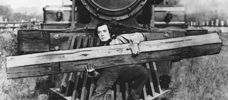
The General
1926 -

The Running Man
1987 -

Guns
1990 -

Highlander
1986 -
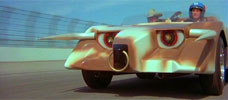
Death Race 2000
1975 -
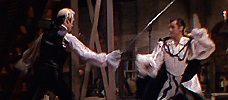
Scaramouche
1952 -

Do or Die
1991 -
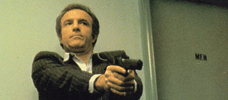
Thief
1981 -

Mission: Impossible
1996 -

Invasion U.S.A.
1985 -

Rambo: First Blood Part II
1985 -

Bullitt
1968 -

Hard Hunted
1992 -

The Fugitive
1993 -

Kindergarten Cop
1990 -
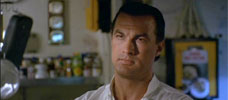
Under Siege
1992 -
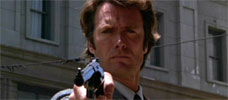
Dirty Harry
1971 -
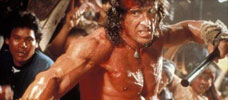
Rambo III
1988 -
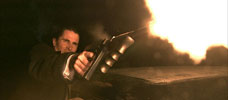
Public Enemies
2009 -

Day of the Warrior
1996 -

The Good, the Bad, the Weird
2008 -

Straw Dogs
1971 -

Die Hard
1988 -

Con Air
1997 -

Collateral Damage
2002 -
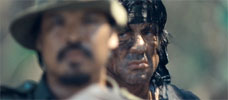
Rambo
2008
We don’t do comments anymore, but you may contact us here or find us on Twitter or Facebook.



